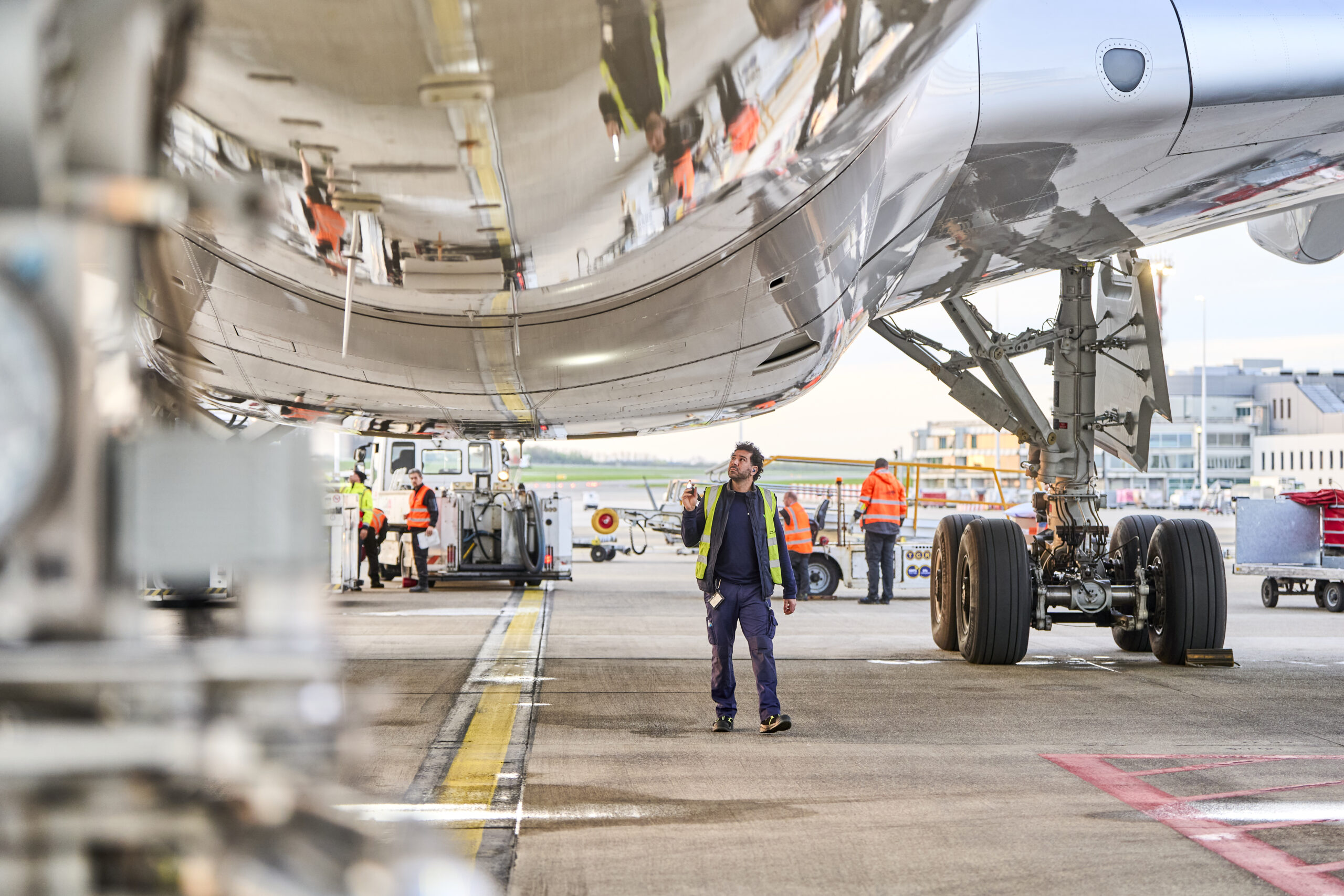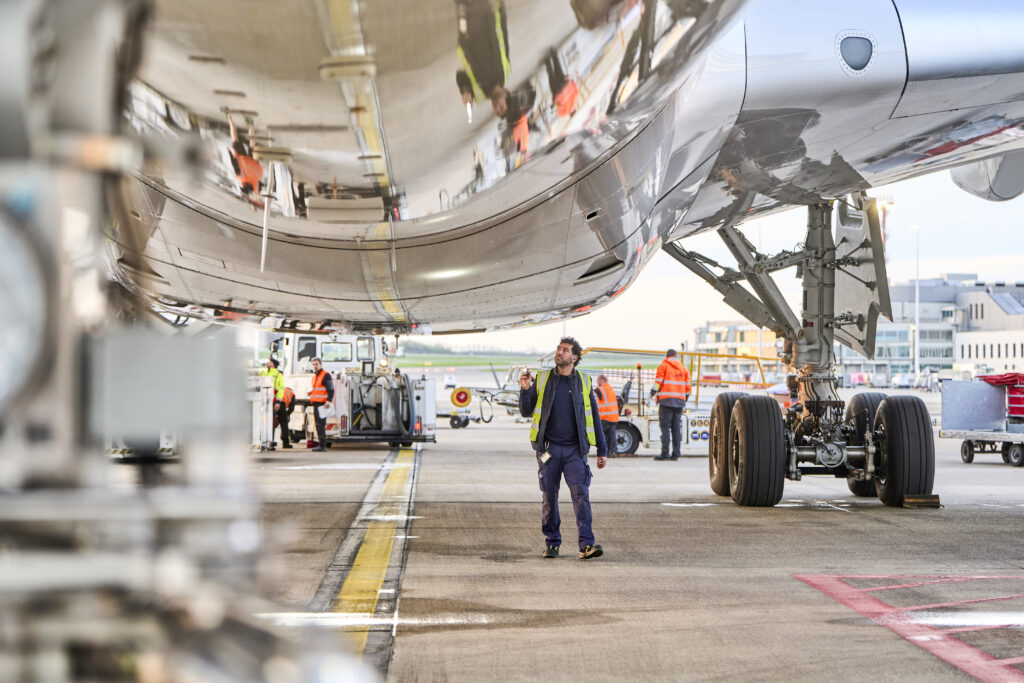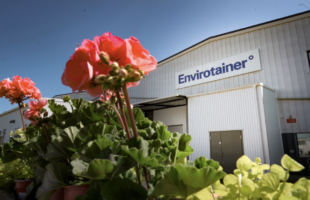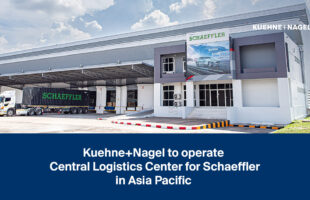

Brussels Airport remains one of the largest and most attractive employers in the country. This is confirmed by a new labour market study on Brussels Airport conducted by HIVA-KU Leuven. This first post-Covid trend analysis of the airport reveals that there are nearly 30,000 direct jobs in and around the airport, with 335 companies operating across 3 clusters and 18 sectors. Additionally, the airport generates 55,000 indirect jobs, making it not only a unique employment hub but also a powerful catalyst for the Belgian economy, serving as the country’s second largest economic growth engine. The airport recruits nationwide and has seen a significant increase in employees from the Brussels-Capital Region, rising to 20% compared to 16% in 2017. Furthermore, 11% of the workforce comes from the Walloon Region. The number of full-time jobs continues to rise, now standing at 79%, up from 72% in the 2017 study, whereas the Flemish average is 59%.
First post-Covid labour market trends and figures for Brussels Airport
This employment trend report for Brussels Airport, commissioned by employment center Aviato and conducted by HIVA-KU Leuven, offers an extensive overview of the airport’s direct employment after an initial baseline measurement in 2017. Based on data from the fourth quarter of 2022, the study paints the situation of the labour market following the Covid years.
The study shows that direct employment has grown since 2017 and is now recovering after the pandemic, with 29,835 direct employees working for 335 companies by the end of 2022, a 25% increase compared to 2017. Additionally, the study reveals that 54,897 indirect jobs are linked to the airport’s presence, bringing the total number of jobs to 84,732.
“This labour market study confirms the importance of Brussels Airport as a major employment engine and Belgium’s second-largest economic growth hub. This record number of jobs also highlights the resilience of the airport community, which has recovered well from the Covid pandemic, not only safeguarding jobs but also resuming growth. Furthermore, this study demonstrates the quality, diversity, and stability of employment at the airport. Brussels Airport remains an attractive employer with numerous job opportunities, and Aviato plays a crucial role in connecting job seekers with the 335 companies at Brussels Airport,” said Arnaud Feist, CEO of Brussels Airport Company.
Unique Labour Market: 3 clusters active across 18 sectors
The research team from HIVA-KU Leuven, led byProfessor Ludo Struyven and Senior Research Associate Tim Goesaert, is the scientific partner behind this labour market study.
“This survey reveals the first post-Covid labour market trends and provides a comprehensive and transparent analysis of both direct and indirect employment at the airport. It offers insights into specific demographic data, such as the types of jobs at the airport and employee profiles—where they live, the gender distribution, their ages, and more. The airport offers a high concentration of jobs within a relatively small area, spanning a wide range of sectors,” explained Senior Research Associate Tim Goesaert of HIVA-KU Leuven.
The unique labour market at Brussels Airport is composed of three clusters and 18 sectors:
- The aviation cluster includes air transport and airport handling, accounting for 31.5% (compared to 40.1% in 2017) of the total workforce.
- The cluster of other airport-related activities supports the aviation cluster with roles in cargo handling, storage, postal services, couriers, security, and industrial cleaning, representing 49.8% (50.4% in 2017) of employees.
- The business cluster consists of companies that are located at the airport due to its multimodal accessibility but have no direct link to airport operations. This cluster saw a growth up to 18.7% (compared to 9.5% in 2017) of the total workforce. Since the previous study, companies like Deloitte and KPMG have set up in new office buildings at the airport, explaining this growth.
Interregional labour mobility pays off
The study shows an increase in the number of employees from all three regions, with a particularly notable rise in workers from the Brussels-Capital Region.
- Of the 29,835 employees, 69% (compared to 74% in 2017) come from the Flemish Region, with 37.5% specifically from Flemish Brabant. Workers also commute from the provinces of Antwerp (16.2%), East Flanders (8.8%), Limburg (4%), and West Flanders (2.6%).
- Nearly 1 in 5 employees, or 20% (up from 16% in 2017), hail from the Brussels-Capital Region, primarily from Brussels, Schaerbeek, and Anderlecht.
- The Walloon Region provides 11% (up from 10% in 2017) of the workforce.
The numerous vacancies at the airport present opportunities not only for job seekers from Flanders but also for those from the Brussels-Capital and Walloon Regions. Brussels Airport serves as a prime example of interregional labour mobility, with efforts to expand this further. Aviato plays a crucial role by connecting job seekers to airport jobs through training programmes, which include language courses when necessary.
“With an average of 400 vacancies, Aviato continues to focus on further developing Brussels Airport as an attractive and dynamic workplace. We inspire, inform, and connect talent with businesses, acting as the one-stop-shop for employment, training, and job mobility around the airport. To attract candidates, employees, and companies with job opportunities at and around the airport, we consistently promote Brussels Airport as an appealing employer. This study also highlights the many benefits of airport jobs. We also rely on our partners to support our efforts,” said Isabelle Borli, General Manager of Aviato.
Brussels Airport: A sustainable workplace with an above-average share of full-time employees
With 79.2% full-time jobs, up from 72% in 2017, Brussels Airport offers a significantly higher rate of full-time employment. In many sectors within and around the airport, full-time work is indeed the norm, with most sectors confirming the figures from 2017. Among handling companies, the proportion of full-time positions has risen to nearly 70%. Likewise, the passenger transport and hospitality sectors have seen an increase in full-time contracts due to changes in company structures. This challenges the perception of aviation as a labour market dominated by part-time jobs and high staff turnover. Companies at Brussels Airport are strongly committed to employee retention, making the airport a sustainable workplace offering stability and long-term employment.
In the aviation cluster, most workers are in white-collar positions. The handling sector is an exception, where just under half (47.2%) of the workforce are blue-collar positions. The sectors within the cluster of other airport-related activities also show a higher proportion of white-collar employees compared to the Flemish average. Across all sectors, the age groups 25-34 and 35-49 are more heavily represented in airport employment than the average in Flanders. Sectors such as temping agencies, security, industrial cleaning, retail, and the business cluster tend to have a younger workforce compared to the Flemish level.
This research demonstrates that Brussels Airport and its surrounding ecosystem generate significant added value and employment. The aviation sector is labour-intensive, contributing to a high level of employment, and continues to be a strong driver of growth for the Belgian economy.









